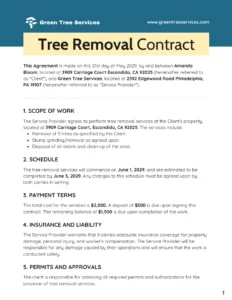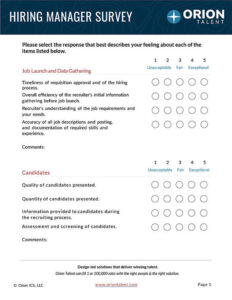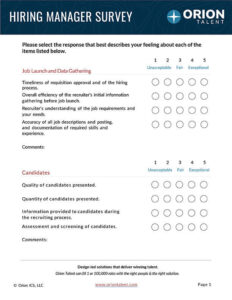As the leaves begin to fall and there’s a distinct chill in the air, many property owners and businesses start thinking about the inevitable: snow. For those living in areas prone to heavy snowfall, reliable snow removal isn’t just a convenience; it’s a necessity for safety and accessibility. But simply hiring someone for a one-off job can lead to misunderstandings and headaches down the line. This is where a well-drafted agreement becomes your best friend.
Having a clear agreement in place from the start ensures that both the service provider and the client are on the same page regarding expectations, responsibilities, and payment. It helps to prevent disputes and provides a professional framework for what can otherwise be a very reactive and stressful service. A solid contract acts as a guide, making the entire winter season run more smoothly for everyone involved.
What Exactly Should Your Seasonal Snow Removal Contract Cover?
Crafting a comprehensive snow removal contract might seem daunting, but breaking it down into essential components makes the process much more manageable. Think of it as building a sturdy bridge between the service provider and the client, ensuring a smooth passage through the winter months. The goal is to leave no room for ambiguity, safeguarding the interests of both parties from the first snowflake to the last thaw.
First and foremost, the contract needs to clearly define the scope of work. What areas are to be plowed, shoveled, or de-iced? Is it just the driveway, or does it include walkways, steps, and parking lots? Specify the triggers for service, such as accumulation thresholds (e.g., "when snow reaches 2 inches") and the timeframe for service completion after a snowfall. Details about specific equipment to be used, if relevant, can also be included to manage expectations regarding surface protection.
Payment terms are another crucial section. This should outline the total cost for the seasonal service, whether it’s a flat rate, per-inch charge, or per-event billing. Clarify the payment schedule (e.g., monthly installments, full payment upfront, or payment after each service), acceptable payment methods, and any late payment penalties. Transparency here is key to avoiding financial disagreements later on.
The duration of the contract needs to be clearly stated. A "seasonal" contract typically runs from a specific start date (e.g., November 1st) to an end date (e.g., April 15th), regardless of the actual snowfall. It should also include clauses for early termination by either party, outlining any required notice periods and potential penalties or refunds. What happens if there’s an unusually mild winter or an exceptionally harsh one? Your seasonal snow removal contract template should address these scenarios.
Key Elements to Include in Your Agreement
Finally, don’t overlook liability and insurance. This section clarifies who is responsible for any damage to property during snow removal and requires the service provider to carry adequate insurance coverage. A force majeure clause is also important, protecting both parties from unforeseen circumstances beyond their control, such as extreme weather events that make snow removal impossible or unreasonably dangerous.
Protecting Both Parties: Why a Clear Contract is Non-Negotiable
A thoroughly detailed contract isn’t just a formality; it’s a foundational document that builds trust and sets clear boundaries for both the snow removal contractor and the client. From the contractor’s perspective, a clear agreement ensures they are compensated fairly for their work and protects them from scope creep. They know exactly what they’re expected to do, when they need to do it, and how they’ll be paid, removing much of the guesswork from their operations.
For the property owner, the contract provides peace of mind. It guarantees that their property will be maintained to a specific standard throughout the winter, helping to ensure safety for residents, employees, or customers. It clearly outlines the service level they can expect, the responsiveness of the contractor, and recourse if services aren’t met as agreed. This transparency helps manage expectations and reduces anxiety during peak snow events.
Moreover, a well-defined contract acts as an invaluable tool for dispute resolution. Should any disagreements arise regarding service quality, timing, or payment, both parties can refer back to the written terms to find a solution. This often prevents minor issues from escalating into costly legal battles, saving time, money, and stress for everyone involved. It establishes a framework for accountability and adherence to promises made.
The value of a robust seasonal snow removal contract template cannot be overstated. It transforms a potentially chaotic, last-minute service into a structured, reliable partnership. By investing time upfront to define all the parameters, both contractors and clients can look forward to a winter season where the focus remains on safety and accessibility, rather than on misunderstandings or unmet expectations.
Ensuring your snow removal needs are covered for the upcoming winter doesn’t have to be a source of stress. By starting with a comprehensive agreement, you’re laying the groundwork for a smooth and efficient service experience. It’s about securing reliability and clarity when you need it most, allowing you to focus on everything else the cold season brings.



